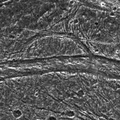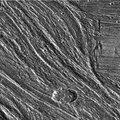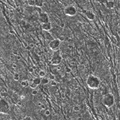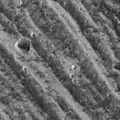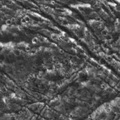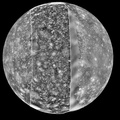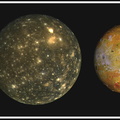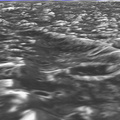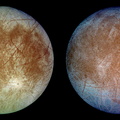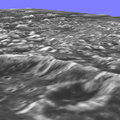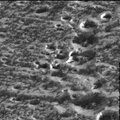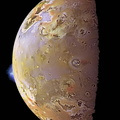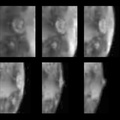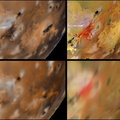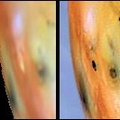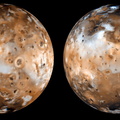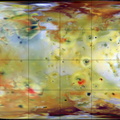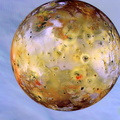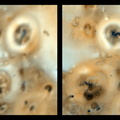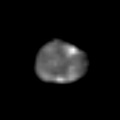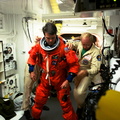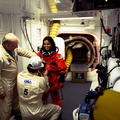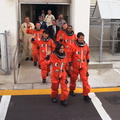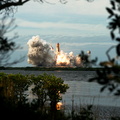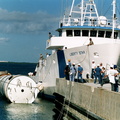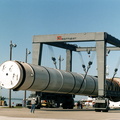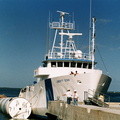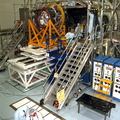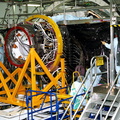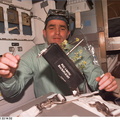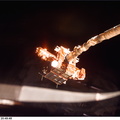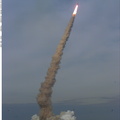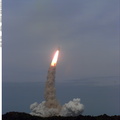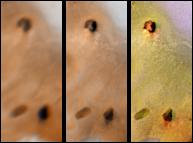
WIKIARCHIVES.SPACE
The Human Spaceflight Archive

Detail of changes around two hotspots on Jupiter's moon Io as seen by Voyager 1 in April 1979 (left) and NASA's Galileo spacecraft on September 7th, 1996 (middle and right). The right frame was created with images from the Galileo Solid State Imaging system's near-infrared (756 nm), green, and violet filters. For better comparison, the middle frame mimics Voyager colors. The calderas at the top and at the lower right of the images correspond to the locations of hotspots detected by the Near Infrared Mapping Spectrometer aboard the Galileo spacecraft during its second orbit. There are no significant morphologic changes around these hot calderas; however, the diffuse red deposits, which are simply dark in the Voyager colors, appear to be associated with recent and/or ongoing volcanic activity. The three calderas range in size from approximately 100 kilometers to approximately 150 kilometers in diameter. The caldera in the lower right of each frame is named Malik. North is to the top of all frames.
Information
- Taken in
- Egilea
- NASA/JPL/University of Arizona
- Azalpena
-
Detail of changes around two hotspots on Jupiter's moon Io as seen by Voyager 1 in April 1979 (left) and NASA's Galileo spacecraft on September 7th, 1996 (middle and right). The right frame was created with images from the Galileo Solid State Imaging system's near-infrared (756 nm), green, and violet filters. For better comparison, the middle frame mimics Voyager colors. The calderas at the top and at the lower right of the images correspond to the locations of hotspots detected by the Near Infrared Mapping Spectrometer aboard the Galileo spacecraft during its second orbit. There are no significant morphologic changes around these hot calderas; however, the diffuse red deposits, which are simply dark in the Voyager colors, appear to be associated with recent and/or ongoing volcanic activity. The three calderas range in size from approximately 100 kilometers to approximately 150 kilometers in diameter. The caldera in the lower right of each frame is named Malik. North is to the top of all frames.
The Jet Propulsion Laboratory, Pasadena, CA manages the Galileo mission for NASA's Office of Space Science, Washington, DC. JPL is an operating division of California Institute of Technology (Caltech).
- Sortuta
- Asteartea 18 Azaroa 1997
- Albumak
- US SPACE PROGRAM / PROBES / JUPITER / GALILEO / Mission Photos (Edited) / JUPITER / IO
- Source link
- https://photojournal.jpl.nasa.gov
- Bisitak
- 16
- Kalifikazioa
- baloratu gabe
- Balioestea
- License
- Public Domain
- Modified by WikiArchives
- No (original)
- Deskargak
- 0
Garatzailea: Piwigo


